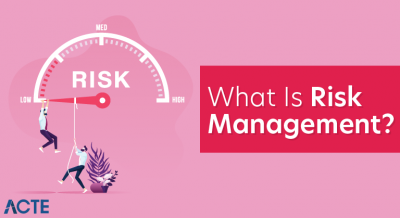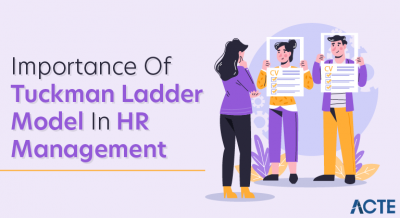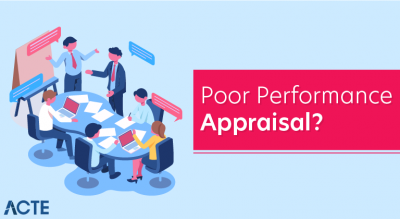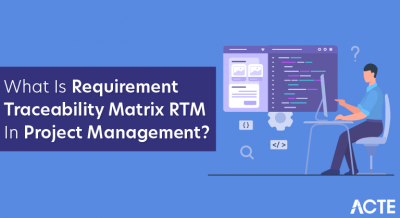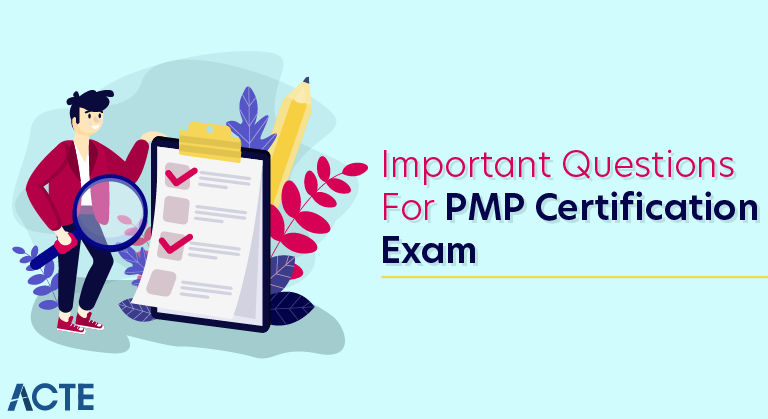
On the PMP exam, you will see six different kinds of questions:
- ITTO-based questions
- Definition-based questions
- Situation-based questions
- Formula-based questions
- Interpretational questions
- Questions on professional and social responsibility.
ITTO stands for “Input, Tools & Techniques, and Output.” You will see many ITTO-based questions on the exam. You may be asked to select the correct Input, Tool & Technique, or Output for a given process.
Example
What is the output of the develop project charter process?
a) Risk register
b) Stakeholder register
c) Project charter
d) Issue log
Clearly, in this case, the output is the project charter.
To solve these types of questions, you should have read the PMBOK Guide multiple times and understood its processes.
Definition-Based QuestionsThese are the most straightforward questions that you will see on your PMP certification exam: the definition of risk, secondary risk, residual risk, etc.
Example
A risk that is a result of a response to any risk is known as a(n):
a) Primary risk
b) Secondary risk
c) Residual risk
d) Unknown risk
Here, the answer is “b,” because the secondary risk is a result of a response to any primary risk.
To solve definition-based questions, you will have to read reference books for definitions of terms and understand the concepts.
Situation-Based QuestionsIn this type of question, you will be given a situation and asked to find the best answer for that scenario. These questions are very challenging because all options may seem correct. However, you have to choose the best option.
Example
Your client asks you for a minor change on your project which you believe will not affect the cost or schedule baseline. What will your next step be?
a) You will implement the request because it will not affect the project.
b) You will not implement the request.
c) You will review the request with your team members.
d) You will inform management.
You will neither deny nor accept any request from the client promptly unless you review it and the client is aware of and agrees to its impact. For any change request, first you will review it with your team members, and then you will decide your next step.
Situation-based questions are usually wordy and have a lot of unnecessary information. You have to read them carefully and ignore unneeded information. Be careful with critical words like except, not, always, and only.
Your experience will help you understand the situation, but to solve it, you have to think the way PMI thinks. You have to assume that you are working on an ideal project and everything will go according to procedures and guidelines.
Formula-Based QuestionsHere you have to solve questions that use mathematical formulas. These questions may come from the critical path method, PERT earned value management, etc.
Example
You have a project that is worth 100,000 USD. To date, you have spent 30,000 USD and 25% of the work is completed. What is the Cost Performance Index (CPI)?
a) 500
b) 833
c) -5000
d) 2
Cost Performance Index = (Earned Value) / (Actual Cost)
CPI = EV / AC
According to the question:
Earned Value = 25% of 100,000 = 25,000
Actual Cost = 30,000 USD
Therefore, CPI = 25,000 / 30,000 = 0.833
Hence, the answer is “b”.
The formula-based questions on the PMP exam are not tough. If you know the formulas and understand when to use them, you will be able to solve most of them.
Just a little practice is enough to solve this type of question.
Interpretational QuestionsIn this case, you will be given some data and you have to analyze to find the correct answer.
Example
You have a project worth 100,000 USD. To date, you have spent 30,000 USD, and 25% of the work is completed.
For the above project, which statement is correct?
a) The project is under budget.
b) The project is over budget.
c) The project is ahead of schedule.
d) The project is behind schedule.
We calculated the CPI in the previous example, and it is 0.833. Since the CPI is less than one, the project is over budget.
A clear understanding of concepts and practice of mathematical questions are both required to solve this type of question.
Questions on Professional and Social ResponsibilitySince you are going to be a PMI Certified PMP, the PMI expects you to follow a specific code of ethics and professional conduct in your behavior.
According to PMI, “As practitioners of project management, we are committed to doing what is right and honorable. We set high standards for ourselves, and we aspire to meet these standards in all aspects of our lives; at work, at home, and in service to our profession.”
Example
During a bidding conference, you notice that a bidder is your friend. What will your next step be?
a) You will help your friend.
b) You will not tell anyone.
c) You will disclose it.
d) You will not attend the conference.
There can be a conflict of interest, and in this case, your first step is to reveal your friendship to management. Hence, the correct answer is “c.”
To solve this type of question, you will have to understand that the PMP expects that you will never break the law under any circumstances. You will always abide by the rules, display high moral behavior, follow the ethics and never run away from your social responsibilities.
You are going to see this type of question on your PMP exam.
Therefore, to practice this type of question, I suggest you try some simulated tests before you attempt the real exam. These will give you an idea of the actual environment, and you can check your progress and find your knowledge gaps.
Q1 Scope
A project stakeholder is trying to add some scope to your project. The project sponsor specifically said this scope was not part of your project when the charter was signed. What should you do?
- A: See if you have made enough progress that would allow this change to be made
- B: See if you have any cash reserves that would allow this change to be made
- C: Reject the request, the scope cannot be added
- D: Talk to the sponsor again
Q2 Time
You are in the process of developing the schedule for the project, and have been given the following activity duration estimates. However, the project sponsors would like you to shave a few weeks off the project duration. Which activity should you shorten in order to reduce the overall duration of the project?
| Activity | Estimate |
|---|---|
| Start – S | 2 |
| Start – T | 9 |
| Start – U | 14 |
| S – W | 4 |
| T – S | Dummy |
| U – X | 1 |
| T – X | 10 |
| W- End | 8 |
| X – End | 1 |
A- Activity W-End
B- Activity Start-S
C- Activity T-S
D- Activity T-X
Q3 Cost
You are a project manager who is in charge of a technical documentation project. The project is 30% complete after 2 months and has cost $53,000. The budget for the project is $90,000 and is scheduled to last 6 months. How is the project performing?
A- The project is behind schedule and over budget.
B- The project is ahead of schedule and under budget
C- The project is ahead of schedule and over budget.
D- The project is behind schedule and under budget.
Q4 Quality
Quality costs are the total costs incurred by investing in preventing non-conformance to requirements. Failure costs are often categorized into external and internal. Failure costs are also known as:
A- Sunk Costs
B- Indirect Costs
C- Cost of Poor Quality
D- Cost of Noncompliance
Q5 Human Resources
Theory X management is based upon an assumption that:
A- Quality improvements lie in the hands of quality circles
B- Profits are tied to meeting the project’s baseline milestones
C- Absenteeism is tied to poor working conditions
D- Workers are inherently unmotivated and need strong guidance
Q6 Communications
You are holding a kick off meeting for the build out of a new data center. This will be the largest, most costly and most complex project you have worked on in your career. You have counted up the number of stakeholders, vendors and project team members to be 52. In order to stress to the group how important and difficult communication will be on the project you want to tell them how many channels of communication exist on the project. What would you tell them?
A- 1326
B- 2704
C- 52
D- 2625
Q7 Risk
Due to unforeseen circumstances your supplier has run out of the cement needed for your construction project. What is the BEST strategy for dealing with this issue?
A- Refer to the risk register.
B- Transfer the risk.
C- Implement the contingency response strategy.
D- Implement a workaround.
Q8 Procurement
You are working with your Procurement Department trying to decide whether to buy or lease an item needed in an upcoming phase of your project. The item costs $2000 plus $50 a day to run. You can rent it at a rate of $150 a day. How long will it take for the lease to match the purchase price?
A- 10 days
B- 20 days
C- 30 days
D- 40 days
Q9 Integration
As the project manager for the Walk Fast Shoes project, you are adding to the project charter to document the boundaries of the project. The BEST source of information at this stage of development is:
A- Lessons learned from past projects
B- Standard guidelines
C- Project sponsor
D- Various stakeholders
Q10 Professional Responsibility
You notice a mistake on one of the invoices going to your client from your company’s accounts receivable department. You know your company is overbilling hours for last month, but you also know the customer is clueless and depends upon you to reconcile these invoices. Your best response to this would be:
A- Tell your A/R department that their invoice is wrong and make sure they correct the error at once.
B- Cover-up as best you can, since the customer will not know the difference, and probably doesn’t care.
C- Ignore the situation; it is not your problem
D- Tell the customer that he will be getting an invoice that has a mistake on it and that he should take it up with the A/R dept.
AnswersQ1- C
Justification:
The best choice is to reject the change. The sponsor specifically did not want this scope as part of the project. Even if you have time or cash, they are not to be used for this purpose.
Q2- A
Justification:
Since the path “Start-T, T-S, S-W, W-End” has the longest duration, this path is considered the critical path of the project. In order to reduce the duration of the overall project, one should reduce the duration of the activities on the critical path. Hence, based on the available choices, one should reduce the duration of Activity W-End.
Q3- A
Justification:
The project is behind schedule; since after two months, less than one-third of the work is complete. It is also over budget, since more than one-third of the budget has been exhausted and there is two-thirds of the project left to go. This assumes that an equal amount of work has been planned for each month of the project.
Use Earned Value formulas:
Actual Costs (AC) = 53K.
Planned Value (PV) is a 2 months into 6 months project i.e. one-third of 90k = 30k.
The Earned Value (EV) = 90k * .3 = 27k.
Cost Variance CV = EV – AC = 27k – 53k = -26k, minus implies over-budget.
Schedule Variance SV = EV – PV = 27k – 30k = -3k, minus implies behind schedule.
Q4- C
Justification:
Failure costs are also called the cost of poor quality. PMBOK 4th. ed. pg. 195
Q5- D
Justification:
McGregor’s Theory X theory states that workers are lazy and unmotivated and need to be excessively managed in order for them to be productive.
Q6- A
Justification:
Communication Channel formula is N(N-1)/2 where N=Number of people involved on the project. Number of communication channels is 52(52-1)/2 52*51=2652 2652/2=1326 PMBOK Pg. 253.
Q7 -D
Justification:
In this situation, you would need to come up with a workaround. A workaround is similar to a contingency response strategy, but differs in that the risk was unexpected and a response was not planned prior to the risk event. Hence it will not be in the risk register. Contingent response strategy is a means to address specific identified risks through a formal process and provide resources to meet risk events if they occur. The question states the problem was unforeseen.
Q8- B
Justification:
The calculation is as follows. Let D = number of days.
150D = 2000 + 50D
150D – 50D = 2000
100D = 2000 => D = 20 days. So if you need the item for more than 20 days, it is cheaper to buy it.
Q9- C
Justification:
The project sponsor should be able to provide authoritative background information about the project. They will also refer you to the best contact for specific details. PMBOK 4th. ed. pg. 25
Q10- A
Justification:
It is best to handle the error yourself, before it gets as far as the customer. If he depends on you to manage invoices, you would be doing your job by handling it.
PMBOK, PMP, PMP, PgMP, CAPM, PMI-SP and PMI-RMP are registered marks of the Project Management Institute, Inc.
On the PMP exam, you will see six types of questions covering all aspects of project management. The exam will test your understanding of the PMBOK Guide and its processes, project management concepts, your experience with complex situations. It will check whether you have leadership and management qualities. If you have all these qualities, knowledge, and skills, you will pass the exam easily.

